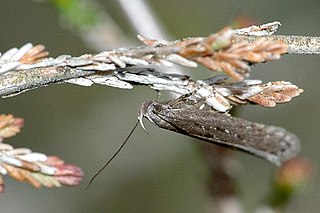
Neofaculta ericetella is a moth of the family Gelechiidae. It is found in Europe and Asia Minor.
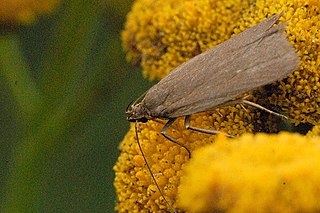
Scrobipalpa acuminatella is a moth of the family Gelechiidae. It is found in most of Europe, as well as Turkey, southern Siberia, Central Asia and China (Anhui). It was recently reported from Canada, with records from Ontario and Québec.

Athrips mouffetella is a moth of the family Gelechiidae. It is found from central and northern Europe to the Ural Mountains, Siberia and the Russian Far East. It has also been recorded from North America.
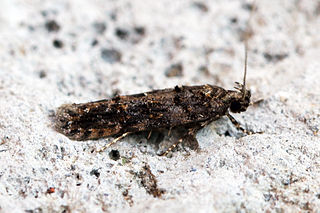
Teleiopsis diffinis is a moth of the family Gelechiidae. It is found in Europe, North Africa, the Near East, central Asia and Siberia (Transbaikalia).
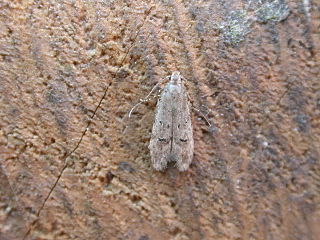
Teleiodes vulgella is a moth of the family Gelechiidae. It is known from most of Europe, east to the southern Ural and the Volga region.
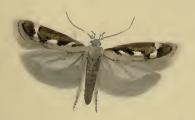
Caryocolum marmorea is a moth of the family Gelechiidae. It is found from Scandinavia to the Mediterranean islands, and from Ireland to Poland, Hungary and Greece. It is also found on the Canary Islands and Madeira. It is also found in North America.

Caryocolum viscariella is a moth of the family Gelechiidae. It is found in Ireland, Great Britain, Fennoscandia, Denmark, Germany, France, Switzerland, Austria, Hungary, Italy, Estonia and Russia.

Scrobipalpa costella is a moth of the family Gelechiidae. It is found in western Europe.
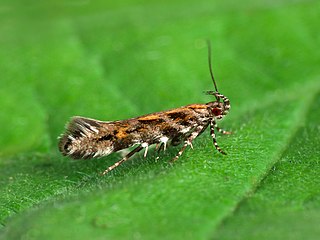
Aristotelia ericinella is a moth of the family Gelechiidae. It is found in most of Europe, except most of the Balkan Peninsula.

Bryotropha domestica is a moth of the family Gelechiidae. It is found from Ireland to Germany, Slovakia, Romania and Bulgaria and from the Benelux to the Iberian Peninsula, Sicily, Crete and Cyprus. It is also found in Morocco, Algeria, Tunisia, Libya, the Middle East, Turkmenistan, Saudi Arabia and Yemen.

Carpatolechia notatella, the sallow-leaf groundling, is a moth of the family Gelechiidae. It is found in most of Europe and Turkey.

Chionodes distinctella, the eastern groundling, is a moth of the family Gelechiidae. It is found in almost all of Europe, as well as most of Russia, Kazakhstan, Central Asia and North Africa. The habitat consists of dry, rocky heath and meadows and the verges and rough pastures.

Chionodes fumatella, the downland groundling, is a moth of the family Gelechiidae. It is found in almost all of Europe. Outside of Europe, it is found in Turkey, the Caucasus, Mongolia and from Siberia to the Russian Far East.

Exoteleia dodecella, the pine bud moth, is a moth of the family Gelechiidae. It is widely distributed from western Europe to Siberia. It is an introduced species in North America.

Gelechia rhombella, the apple groundling, is a moth of the family Gelechiidae. It is found in Europe, the Caucasus, Transcaucasia, southern Siberia, the Russian Far East, Korea and China.

Gelechia sororculella, the dark-striped groundling, is a moth of the family Gelechiidae. It is widely distributed from Europe, throughout Siberia to the Russian Far East.

Scrobipalpa atriplicella, the goosefoot groundling moth, is a moth of the family Gelechiidae. It is found from most of Europe throughout Asia to Kamchatka and Japan. It is an introduced species in North America.
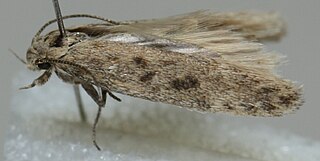
Scrobipalpa obsoletella, the summer groundling, is a moth of the family Gelechiidae. It is found in most of Europe, Turkey, the Caucasus, from Iran to Asian Russia (Transbaikal) and Mongolia. It has also been recorded from New Zealand, South Africa and North America, where it is probably an introduced species. The habitat consists of coastal salt marshes and sandy beaches.

Scrobipalpa samadensis, the buck's-horn groundling, is a moth of the family Gelechiidae. It is found in most of Europe and Russia.

Scrobipalpa instabilella, the saltern groundling, is a moth in the family Gelechiidae. It was described by John William Douglas in 1846. It is found in on the Canary Islands, in Algeria, Ireland, Great Britain, Portugal, Spain, France, Belgium, the Netherlands, Germany, Denmark, Italy, Sardinia, Sicily, Greece, Cyprus and Palestine. It is also present in the United States, where it has been recorded from California.

















